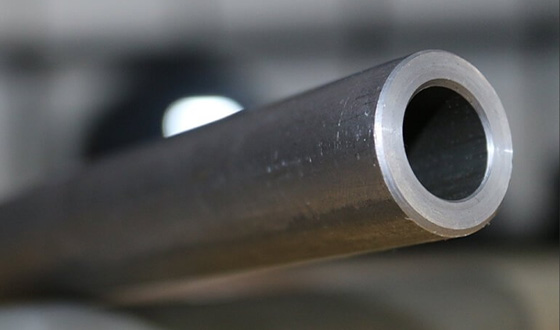-
Cangzhou Yulong Steel Co., Ltd.
-
Phone:
+86 13303177267 -
Email:
admin@ylsteelfittings.com
- English
- Arabic
- Italian
- Spanish
- Portuguese
- German
- kazakh
- Persian
- Greek
- French
- Russian
- Polish
- Thai
- Indonesian
- Vietnamese
- Zulu
- Korean
- Uzbek
- Hindi
- Serbian
- Malay
- Ukrainian
- Gujarati
- Haitian Creole
- hausa
- hawaiian
- Hebrew
- Miao
- Hungarian
- Icelandic
- igbo
- irish
- Japanese
- Javanese
- Kannada
- Khmer
- Rwandese
- Afrikaans
- Albanian
- Amharic
- Armenian
- Azerbaijani
- Basque
- Belarusian
- Bengali
- Bosnian
- Bulgarian
- Catalan
- Cebuano
- China
- China (Taiwan)
- Corsican
- Croatian
- Czech
- Danish
- Esperanto
- Estonian
- Finnish
- Frisian
- Galician
- Georgian
- Kurdish
- Kyrgyz
- Lao
- Latin
- Latvian
- Lithuanian
- Luxembourgish
- Macedonian
- Malgashi
- Malayalam
- Maltese
- Maori
- Marathi
- Mongolian
- Myanmar
- Nepali
- Norwegian
- Norwegian
- Occitan
- Pashto
- Dutch
- Punjabi
- Romanian
- Samoan
- Scottish Gaelic
- Sesotho
- Shona
- Sindhi
- Sinhala
- Slovak
- Slovenian
- Somali
- Sundanese
- Swahili
- Swedish
- Tagalog
- Tajik
- Tamil
- Tatar
- Telugu
- Turkish
- Turkmen
- Urdu
- Uighur
- Welsh
- Bantu
- Yiddish
- Yoruba

Dec . 17, 2024 18:00 Back to list
flanges norma ansi
Understanding ANSI Flanges A Comprehensive Overview
Flanges are mechanical components used to connect two ends of a piping system, serving as a critical interface between different sections of piping, valves, and other equipment. Among the various standards that govern flange dimensions and specifications, the American National Standards Institute (ANSI) provides one of the most widely recognized frameworks. This article will explore the ANSI flange standards, their significance, and how they influence industrial applications.
What Are ANSI Flanges?
ANSI flanges are standard flanges that comply with specifications set forth by the ANSI in the United States. These standards cover various aspects of flange design, including dimensions, pressure ratings, materials, and testing methods. The most commonly referenced ANSI flange standard is ANSI B16.5, which outlines the design and manufacturing criteria for pipe flanges from 1/2 inch to 24 inches in nominal diameter.
Types of ANSI Flanges
There are several types of ANSI flanges, each serving specific applications
1. Weld Neck Flanges These flanges feature a long neck that provides a gradual transition between the flange and the pipe, ensuring stress is distributed evenly. They are optimal for high-pressure and high-temperature applications.
2. Slip-On Flanges Designed to slip over the pipe, these flanges are easy to install. They are typically used in lower-pressure applications due to their reduced strength compared to weld neck flanges.
3. Blind Flanges These are solid flanges that do not have a center hole. They are used to seal the end of a piping system, preventing the flow of fluids.
4. Threaded Flanges These flanges have internal threads that allow them to be screwed onto the pipe. They are useful in situations where welding is impractical.
Pressure Ratings and Classifications
ANSI flanges are classified based on their pressure rating, commonly referred to as Class. These classes indicate the maximum pressure that a flange can withstand at a given temperature. The most common classes include
flanges norma ansi

- Class 150 Suitable for low-pressure applications. - Class 300 Designed for medium-pressure systems. - Class 600 and above Used for high-pressure applications.
Understanding these classifications is crucial for engineers and designers, as selecting a flange with an inadequate pressure rating can lead to system failures and hazardous conditions.
Materials Used in ANSI Flanges
ANSI flanges are available in various materials to suit different environmental conditions and fluid types. Common materials include
- Carbon Steel Ideal for most general-purpose applications. - Stainless Steel Offers excellent corrosion resistance, making it suitable for chemical and marine environments. - Alloy Steel Used in specialized applications requiring enhanced strength and durability. - Plastic Often utilized in low-pressure, non-corrosive environments.
Importance of Compliance with ANSI Standards
Adhering to ANSI flange standards is vital for several reasons
1. Safety Ensuring that flanges meet specific standards reduces the risk of failure, leaks, and catastrophic accidents. This adherence is especially important in industries such as oil and gas, chemical processing, and water treatment.
2. Interchangeability ANSI standards promote uniformity across manufacturers, allowing for easier installation and maintenance of piping systems. Engineers can confidently select components from different suppliers without worrying about compatibility.
3. Quality Assurance ANSI compliance often implies that the flange has undergone rigorous testing and quality control processes, providing reassurance to end-users regarding performance and reliability.
4. Regulatory Compliance Many industries are required to follow specific regulations and standards. Using ANSI-compliant flanges helps organizations meet these legal requirements, avoiding potential penalties.
Conclusion
In conclusion, ANSI flanges play a fundamental role in the integrity and safety of piping systems across various industries. Understanding the different types of flanges, their pressure ratings, and the importance of adhering to established standards is crucial for engineers, designers, and maintenance professionals. By following ANSI standards, industries can ensure reliable performance, mitigate risks, and enhance the overall efficiency of their operations. As technology evolves and new materials and designs emerge, ANSI standards will likely continue to play an essential role in shaping the future of flange manufacturing and application.
Latest news
-
ANSI 150P SS304 SO FLANGE
NewsFeb.14,2025
-
ASTM A333GR6 STEEL PIPE
NewsJan.20,2025
-
ANSI B16.5 WELDING NECK FLANGE
NewsJan.15,2026
-
ANSI B16.5 SLIP-ON FLANGE
NewsApr.19,2024
-
SABS 1123 FLANGE
NewsJan.15,2025
-
DIN86044 PLATE FLANGE
NewsApr.19,2024
-
DIN2527 BLIND FLANGE
NewsApr.12,2024
-
JIS B2311 Butt-Welding Fittings LR/SR 45°/90° /180°Seamless/Weld
NewsApr.23,2024











